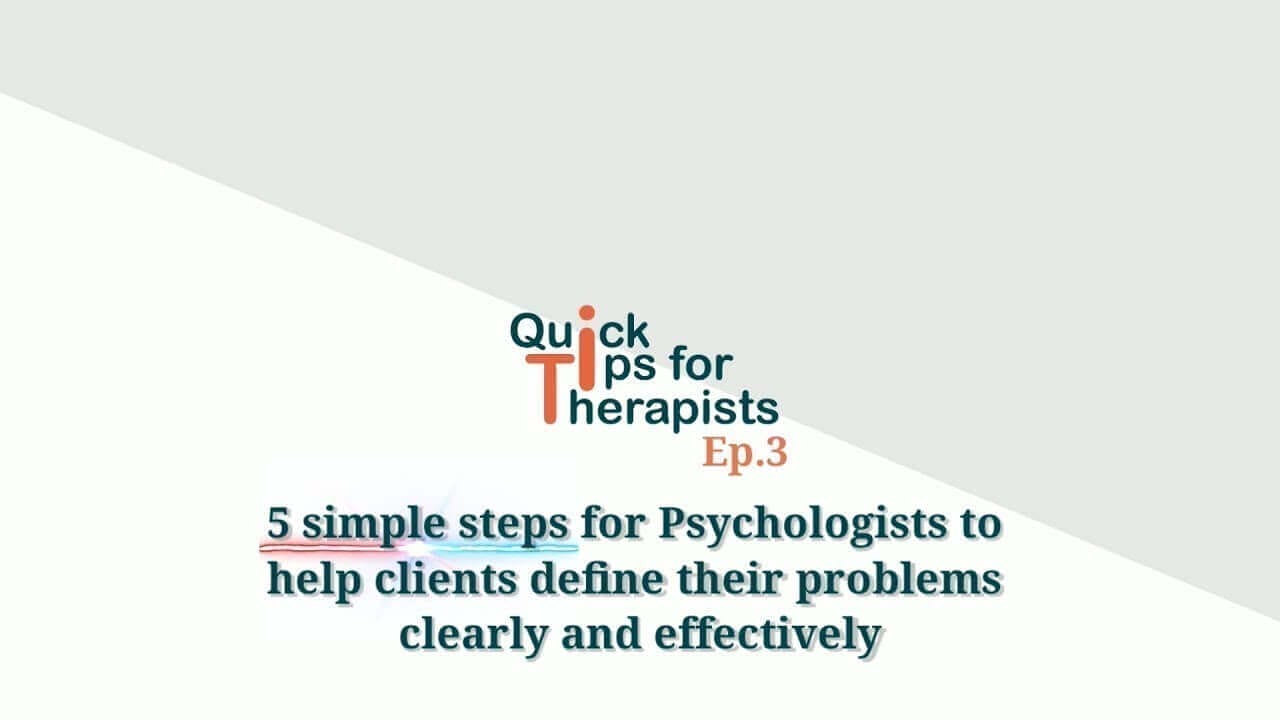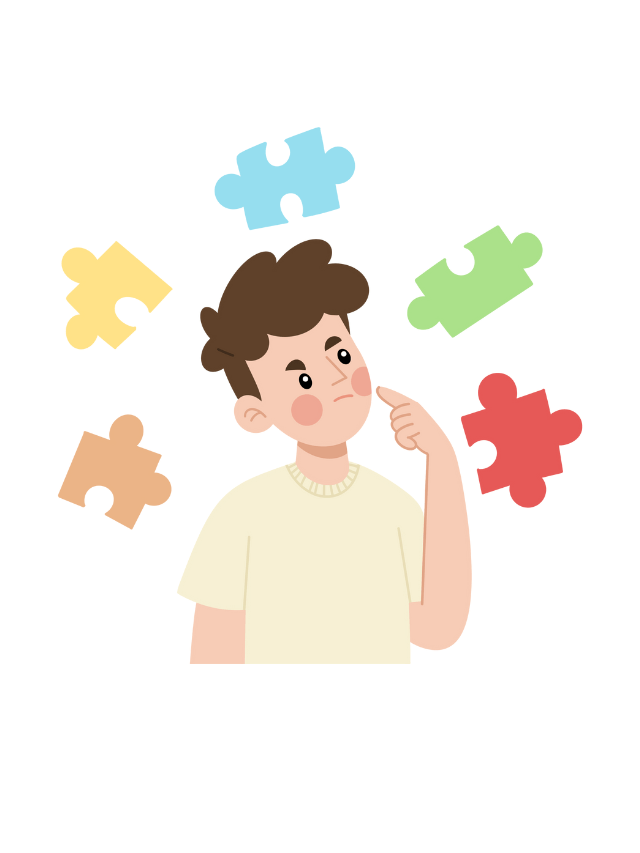Did you know you can help your clients define their problems clearly and effectively in 5 simple steps?
To be able to define a problem clearly and effectively, we first need to understand what do we really mean by a clear or effective definition of a problem.
What are the key components of a problem that the client needs to tell us so that we can understand what is it that the client is experiencing or working with?
3 Key components of a problem

So can you think what these key components are?
- First component is actually straightforward. The feeling that the client is experiencing or the mental state that the client is in. It can be a physical feeling like heaviness, pain, restlessness or emotional feeling like anger, guilt, fear or a mental state like confused, overwhelmed, lost. It is this mental state that becomes the primary reason why the client seeks help from a therapist.
- Second component is About. Whatever the mental state the client is experiencing it is generally about something or someone. This can be a person, a situation, a task or an outcome.
- Third and the final component is When. When is it that the client feels the way they feel. It could be when they see something, hear something, they think something, it could be a time of the day or anything else that acts as a trigger.
Now in most cases, you will notice that a client will be able to tell you all three components.
That said in some cases the line between about and when can get a bit blurred and the client may be able to tell you only one of the two. In case that happens, you can just start with 2 out of the 3 components.
Also in cases of depression and generalised anxiety for when the client may say always and that’s ok to get started.
I have spoken to so many clients and therapists who have earlier struggled with defining a problem clearly. It would take them hours of conversation and even after that many times they were not able to define the problem clearly.
Once we understand these components, with the right set of questions we can help the client define the problem not just clearly but also effectively.
Now, what do I really mean by effectively?
A problem is defined effectively when the client completely resonates with the problem statement. When the client reads it or hears it and experiences clarity in terms of what is happening with him or her.
Advantages of helping clients define problems clearly?
Once you can help the client define the problem clearly and in a way that the client resonates with it completely, you will notice something changing in the client. The client naturally starts to trust you more and the therapeutic alliance becomes very strong.
Another advantage of defining the problem in such a way is that client naturally gets more clarity about what outcome they would like to achieve with the help of therapy. I would talk about how to help clients define outcomes precisely in one of the next videos.
Fun fact, in our experience, a client you has been able to define the problem clearly and effectively in the first session using the format I feel ……….. about ……………….. when……………… are more than twice as likely to continue with the therapy session till they achieve their outcome as compared to the client who is not able to define their problem in the first session.
Another fun fact is that you can help the client define their problem in less than 20 mins with the help of 5 really simple steps.
5 Simple steps to help clients define problems effectively and clearly
Now that we know the components let us look at the 5 super simple steps that can help you help your clients define their problems quickly and effectively.
- First steps is to greet the client. Something as simple as “Hi ! how are you is a good start”
- Second steps is to ask the client “So do let me know what would you like to work with?” The client will generally begin with a one or a two line answer for this. If the client says I am not sure where to start, you can tell them “whatever is the first thing that comes to your mind, you can begin with that.”
- Third step is to ask the client “would you be able to elaborate on this a bit more?” Let the client give you some more details about the challenge they are facing. Unless the client breaks down and starts crying during this question, give the client around 10 mins for this. After 10 mins when the client pauses to think or to take a breath move to the next step. In case the client has an emotional breakdown during this stage, allow them the time to share what they want to till they calm down and then move to the next step. No matter what do not stop the session here, complete all the steps of defining the problem in this session.
- Fourth Step is to ask the client “Before we go ahead can you please summarize what you have shared till now in a few lines”. When the client summarizes, right it down preferably in a way that the client can see this.
- Once the client summarizes their challenge, the fifth step is to ask them “Can you please fill in the blanks and convert this summary into the following format: I feel …………………. about ………………… when ………………….”

That’s it, in 5 simple steps you have helped the client define problems clearly and effectively.
Next just to be sure ask the client to read the problem or the current situation statement a couple of times and ask them “Does this describe the problem clearly and completely or would you like to make some changes in this?”
If the client says this is good we are done but in case the client says I would like to make some changes, ask them to go ahead and make the changes they would like to.
Once they have made the changes ask them to read again and check if “this describes the problem clearly and completely?”
Repeat this process till the client says “yes” this describes the problem clearly and completely.
This was super simple wasn’t it?
I have had clients who have been through multiple therapists previously and yet when I do this process with them they are amazed at the clarity they receive at the end of these super-simple steps.
I have had clients telling me just after this step that “I am already feeling relieved because I know what I want to work with, I had been struggling for months to be able to understand this.”
The best thing about these steps is that they work not just for me but I have had the privilege of training a large number of practitioners who during our follow up sessions tell me how their clients are telling them the same things that my clients tell me.
I am sure you would like your clients to say something like this to you, wouldn’t you?
The one place where you will not be able to apply these steps as it is, is when a client is not even able to give you an initial brief about their problem or situation either because they are not sure what the problem really is or because they don’t feel comfortable enough to talk about their problem.
What do you do with these clients is what we will focus on in the next post.
I would also request you to join us in this mission to help mental health practitioners develop advanced therapeutic skills. You can do so by sharing it with your friends and colleagues.
Also if you are looking for supervised training program that focuses on developing advanced therapeutic skills, do check out the courses offered by ICHARS or simply connect with us over a call.



